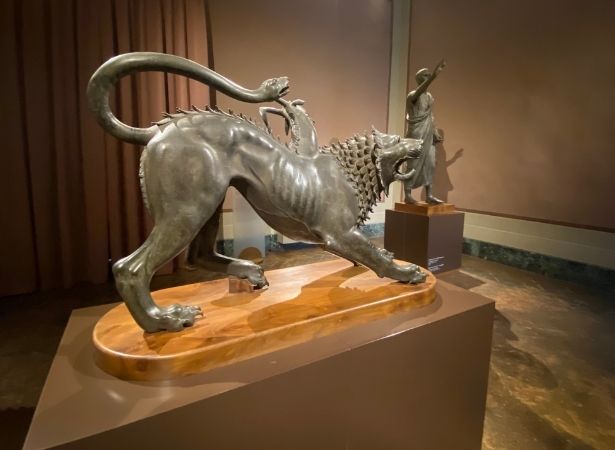The Archaeological Museum in Florence

The first group of exhibits, just part of the enormous patrimony of the museum, dates from Cosimo il Vecchio and Lorenzo il Magnifico.
The collection was enlarged by the House of Lorraine and was on show in the Uffizzi until 1880 when it was moved to its present place in the Palazzo della Crocetta which was built in 17th century for Maria Maddalena de' Medici. The exhibits are divided into themes: Greek, Roman and Etruscan antiquities, the Egyptian museum (second largest in Italy after Turin), and the Etruscan topographical museum. There are also numerous other collections: numismatic, amphorae, inscriptions and so on.
Among the many masterpieces on exhibit it is the bronze statue called the Chimera of Arezzo, the mythical three-headed lion discovered in the Arezzo countryside in 1553 and probably restored by Benvenuto Cellini. The statue, l'Arringatore, found near Lake Trasimeno, dates from I B.C. An inscription identifies the figure wearing a toga as the Etruscan noble, Aule Meteli. It depicts him speaking in public. An important piece in the Greek ceramic collection is the Vaso François, a result of collaboration between the potter Ergotimos and Kleitias who painted the black figures.
The Egyptian section is on the first floor and includes the Nizzoli and Schiapparelli collections and finds from the excavations carried out in 1828-9 by Rosellini and Champollion.









